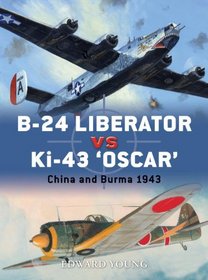Search -
B-24 Liberator vs Ki-43 'Oscar': China and Burma 1943 (Duel)
B-24 Liberator vs Ki-43 'Oscar' China and Burma 1943 - Duel
Author:
During the late 1930s an armament race developed between bombers and the fighters that were bent on stopping them. The development of multi-engined, multi-gun, all-metal bombers forced a corresponding increase in fighter armament which, in turn, led to further attempts to improve bomber armament to ensure its ability to survive in the face of ho... more »
Author:
During the late 1930s an armament race developed between bombers and the fighters that were bent on stopping them. The development of multi-engined, multi-gun, all-metal bombers forced a corresponding increase in fighter armament which, in turn, led to further attempts to improve bomber armament to ensure its ability to survive in the face of ho... more »
The Market's bargain prices are even better for Paperbackswap club members!
Retail Price: Buy New (Paperback): $14.29 (save 24%) or
Become a PBS member and pay $10.39+1 PBS book credit
![header=[] body=[Get a free book credit right now by joining the club and listing 5 books you have and are willing to share with other members!] Help icon](/images/question.gif?v=5fea88b8) (save 45%)
(save 45%)ISBN-13: 9781849087025
ISBN-10: 1849087024
Publication Date: 4/17/2012
Pages: 80
Rating: ?
ISBN-10: 1849087024
Publication Date: 4/17/2012
Pages: 80
Rating: ?
0 stars, based on 0 rating
Genres:




